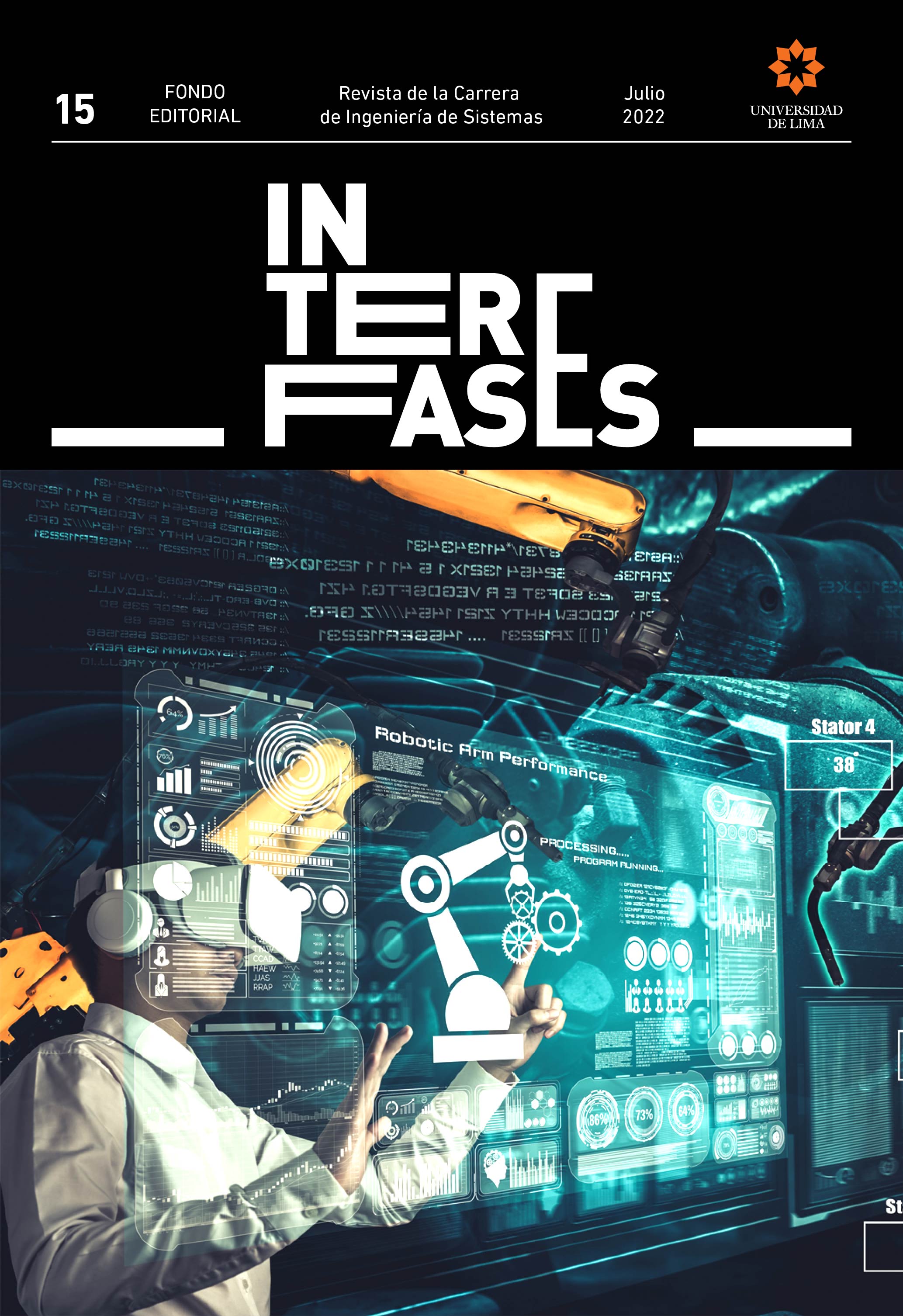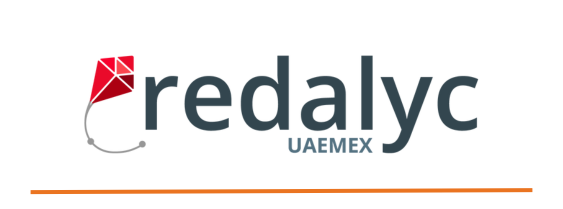Aplicación de métodos de Deep Learning en series de tiempo para el pronóstico de la situación macroeconómica en América Latina
DOI:
https://doi.org/10.26439/interfases2022.n015.5817Palabras clave:
Aprendizaje Profundo, Pronóstico de PBI, CEPAL, Redes NeuronalesResumen
Los métodos de deep learning pueden ser aplicados para generar modelos de pronóstico. Nosotros trabajamos con el producto bruto interno (PBI) de seis países de América Latina: Argentina, Brasil, Chile, Colombia, México y Perú empleando indicadores macroeconómicos anuales y trimestrales, del Banco Mundial y la Comisión Económica para América Latina y el Caribe (CEPAL), respectivamente. Para el preprocesamiento de los datos, a las series trimestrales se agregaron como características adicionales la descomposición de estas en tendencia, estacionalidad y residuo, con la finalidad de aportar más información a los modelos. Además, se reemplazaron datos atípicos producto del impacto de la pandemia del COVID-19 en la economía mundial. Se construyeron modelos de Perceptrón Multi Capa, Red Neuronal Convolucional, LSTM, GRU y SeqToSeq para cada país y frecuencia de sus series, y luego se evaluaron mediante validación cruzada continua y métricas MAE, RMSE y MAPE. Los modelos óptimos varían por cada caso.
Descargas
Referencias
Banco Mundial. (2021). Banco de datos. Recuperado el 24 de octubre de 2021, de https://databank.bancomundial.org/
Brownlee, J. (2017). Deep learning for time series forecasting: Predict the future with MLPs, CNNs and LSTMs in Python. Machine Learning Mastery.
Chollet, F. (2018). Deep learning with Python. Manning Publications Co.
Cleveland, R. B., Cleveland, W. S., McRae, J. E., & Terpenning, I. J. (1990). STL: A seasonal trend decomposition procedure based on loess. Journal of Official Statistics, 6(1), 3-33.
Comisión Económica para América Latina y el Caribe. (2021). CEPALSTAT: Bases de Datos y Publicaciones Estadísticas. Recuperado el 14 de diciembre de 2021 de https://statistics.cepal.org/portal/cepalstat/dashboard.html
Cook, T., & Smalter Hall, A. (2017). Macroeconomic indicator forecasting with deep neural networks. The Federal Reserve Bank of Kansas City Research Working Papers. https://doi.org/10.18651/rwp2017-11
Guimarães, R. R. S. (2022). Deep learning macroeconomics [Tesis de maestría, Universidade Federal do Rio Grande do Sul]. http://hdl.handle.net/10183/239533
Han, J., Kamber, M., & Pei, J. (2012). Data mining: Concepts and techniques (3.ª ed.). Elsevier/Morgan Kaufmann.
Hyndman, R. J., & Athanasopoulos, G. (2021). Forecasting: principles and practice (3.ª ed.), OTexts. Recuperado el 10 de mayo de 2022 de https://OTexts.com/fpp3
Jamieson, K., & Talwalkar, A. (2016). Non-stochastic best arm identification and hyperparameter optimization. Proceedings of the 19th International Conference on Artificial Intelligence and Statistics. Proceedings of Machine Learning Research 51, 240-248. https://proceedings.mlr.press/v51/jamieson16.html
Jung, J.-K., Patnam, M., & Ter-Martirosyan, A. (2018). An algorithmic crystal ball: Forecasts-based on machine learning. IMF Working Papers, 18(230), 1-33. https://doi.org/10.5089/9781484380635.001
Kelany, O., Aly, S., & Ismail, M. A. (2020, November). Deep learning model for financial time series prediction. 2020 14th International Conference on Innovations in Information Technology (IIT), 120-125.
Lazzeri, F. (2020). Machine learning for time series forecasting with Python. Wiley.Li, L., Jamieson, K., DeSalvo, G., Rostamizadeh, A., & Talwalkar, A. (2018). Hyperband: A novel bandit-based approach to hyperparameter optimization. Journal of Machine Learning Research, 18(185), 1-52. http://jmlr.org/papers/v18/16-558.html
Mankiw, N. G. (2014). Macroeconomía, (8.ª ed.). Antoni Bosch.
Nguyen, H. T., & Nguyen, D. T. (2020). Transfer learning for macroeconomic forecasting. 2020 7th NAFOSTED Conference on Information and Computer Science (NICS), 332-337. https://doi.org/10.1109/NICS51282.2020.9335848
Skansi, S. (2018). Introduction to deep learning: From logical calculus to artificial intelligence. Springer.
Sutskever, I., Vinyals, O., & Le, Q. V. (2014). Sequence to sequence learning with neural networks. Proceedings of the 27th International Conference on Neural Information Processing Systems (NIPS’14), 2, 3104-3112. https://dl.acm.org/doi/10.5555/2969033.2969173
Tan, P.-N., Steinbach, M., & Kumar, V. (2006). Introduction to data mining. Pearson Education.
Viswanath, S., Saha, M., Mitra, P., & Najundiah R. S. (2019), Deep learning based LSTM and SeqToSeq Models to detect monsoon spells of India. En João M. F. Rodrigues, Pedro J. S. Cardoso, Jânio Monteiro, Roberto Lam, Valeria V. Krzhizhanovskaya, Michael H. Lees, Jack J. Dongarra, Peter M. A. Sloot (Eds.), Computational Science – ICCS 2019 (Part II, vol. 11537, pp. 204-218). https://doi.org/10.1007/978-3-030-22741-8_15
Zyatkov, N., & Krivorotko, O. (2021). Forecasting recessions in the US Economy using machine learning methods. 2021 17th International Asian School-Seminar “Optimization Problems of Complex Systems (OPCS)”, 139-146, https://doi.org/10.1109/OPCS53376.2021.9588678
Publicado
Número
Sección
Licencia
Los autores/as que publiquen en esta revista aceptan las siguientes condiciones:
Los autores/as conservan los derechos de autor y ceden a la revista el derecho de la primera publicación, con el trabajo registrado con la licencia de atribución de Creative Commons, que permite a terceros utilizar lo publicado siempre que mencionen la autoría del trabajo y a la primera publicación en esta revista.
Los autores/as pueden realizar otros acuerdos contractuales independientes y adicionales para la distribución no exclusiva de la versión del artículo publicado en esta revista (p. ej., incluirlo en un repositorio institucional o publicarlo en un libro) siempre que indiquen claramente que el trabajo se publicó por primera vez en esta revista.
Se permite y recomienda a los autores/as a publicar su trabajo en Internet (por ejemplo en páginas institucionales o personales) antes y durante el proceso de revisión y publicación, ya que puede conducir a intercambios productivos y a una mayor y más rápida difusión del trabajo publicado (vea The Effect of Open Access).
Última actualización: 03/05/21






